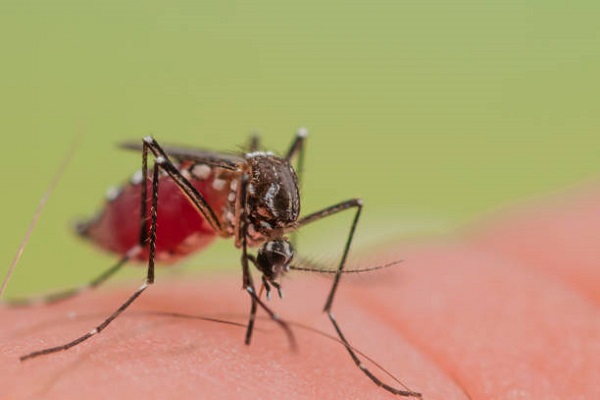China is witnessing a sudden outbreak of the chikungunya virus, a mosquito-borne disease, with over 7,000 confirmed cases reported across Guangdong province since July 2025.

Table of Contents
The outbreak has prompted regional health authorities to take stringent control measures, reminiscent of protocols implemented during the COVID-19 pandemic, in an effort to curb the virus’s spread and protect public health.
Chikungunya Outbreak Hits Foshan Hardest
The city of Foshan has emerged as the epicenter of the outbreak, reporting the highest number of infections in the province. In response, hospitals have been instructed to isolate patients, keeping them under close observation with additional safeguards such as mosquito net-covered hospital beds to prevent further transmission.
Chikungunya patients in Foshan are not allowed to leave the hospital until they test negative for the virus or complete a mandatory seven-day stay, even if symptoms improve sooner. These policies are part of a larger public health initiative to control the spread and reduce further mosquito transmission in densely populated urban areas.
Also Read: Public Transport Fares Increase by 20% Effective August 8, 2025 – GRTCC Announces New Rates
Understanding the Chikungunya Virus
The chikungunya virus is primarily transmitted through the bite of infected Aedes mosquitoes, particularly Aedes aegypti and Aedes albopictus. It is not contagious between humans and only spreads through mosquito vectors.
The infection is characterized by sudden onset fever, severe joint pain, fatigue, rash, and muscle aches. Although most cases are not fatal, joint pain can be long-lasting, in some cases persisting for months or even years.
Unlike other mosquito-borne illnesses such as dengue or malaria, the chikungunya virus has no specific treatment or vaccine. Management typically involves rest, hydration, and the use of pain relievers to reduce symptoms.
Infection Spreads to Over a Dozen Cities
Aside from Foshan, at least 12 other cities in Guangdong province have reported cases of chikungunya. In the past week alone, nearly 3,000 new infections were documented, sparking increased public awareness and concern.
Health officials have confirmed that 95% of the cases have been mild, with patients being discharged within a week. However, the speed of transmission and unfamiliarity with the disease in China have led to a heightened state of alert and a wave of public unease, especially on Chinese social media platforms.
First Case Reported in Hong Kong
The virus has now reached Hong Kong, with authorities confirming the first case in a 12-year-old boy. The child reportedly traveled to Foshan in July and developed fever, rash, and joint pain shortly after his return. This development has raised concern over the virus spreading beyond mainland China, particularly in areas with high human traffic.
Public Reactions and International Travel Warnings
The outbreak has sparked anxiety and online debate among Chinese netizens. Many users on platforms like Weibo have expressed fear and confusion, citing the long-term joint complications as particularly alarming. Some compared it to the early days of the COVID-19 outbreak, prompting renewed calls for public hygiene and government vigilance.
Meanwhile, the United States has issued a travel advisory, urging citizens to exercise increased caution when visiting southern China, especially the Guangdong region. Travelers are advised to use mosquito repellents, wear long-sleeved clothing, and avoid stagnant water, which serves as a breeding ground for mosquitoes.
Government Measures and Public Health Response
In response to the outbreak, Chinese health authorities have rolled out several preventive and control measures:
- Hospital isolation protocols for confirmed cases
- Fogging and fumigation in high-risk areas to kill adult mosquitoes
- Public awareness campaigns about mosquito bite prevention
- Distribution of mosquito nets and insect repellents in affected communities
- Enhanced vector surveillance and mosquito breeding site removal
Local governments are also working with environmental agencies to address poor drainage systems and stagnant water sites, which contribute to mosquito breeding.

A Wake-Up Call on Vector-Borne Disease Preparedness
The chikungunya outbreak in Guangdong province serves as a critical reminder of the threats posed by vector-borne diseases, especially in regions not traditionally affected by such viruses. With climate change, globalization, and increased travel, the spread of mosquito-borne illnesses like chikungunya is no longer confined to tropical regions.
While Chinese health authorities have acted swiftly, continued public cooperation, environmental management, and international collaboration will be essential in preventing a wider spread. The situation also highlights the importance of early detection, accurate information, and proactive containment strategies to avoid another potential health crisis.


